Shrimp pad Thai is a combination of stir-fried shrimp and tender rice noodles tossed in a savory umami sauce. Takeout at home has never tasted better!

Why this recipe works
This shrimp pad Thai opens up with a kick of flavor thanks to the homemade Thai-inspired sauce. Pair with plump shrimp and rice noodles and you have your very own Thai takeout right at home. Because shrimp cooks up quickly and there isn’t a lot of labor involved, this dish makes its way to the table in a snap. We love serving it up with a side of crisp vegetable spring rolls!
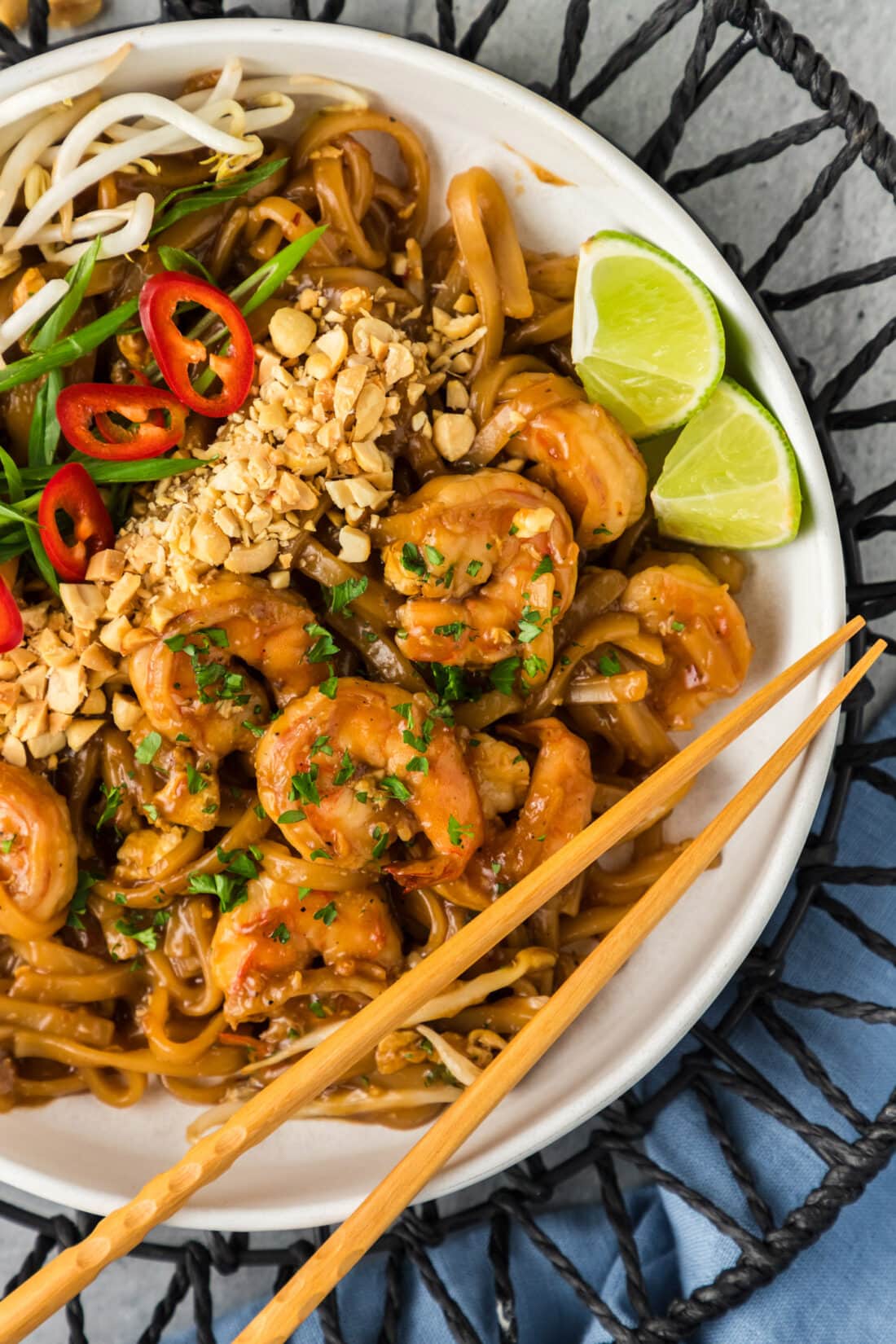
Ingredients you will need
Get all measurements, ingredients, and instructions in the printable version at the end of this post.
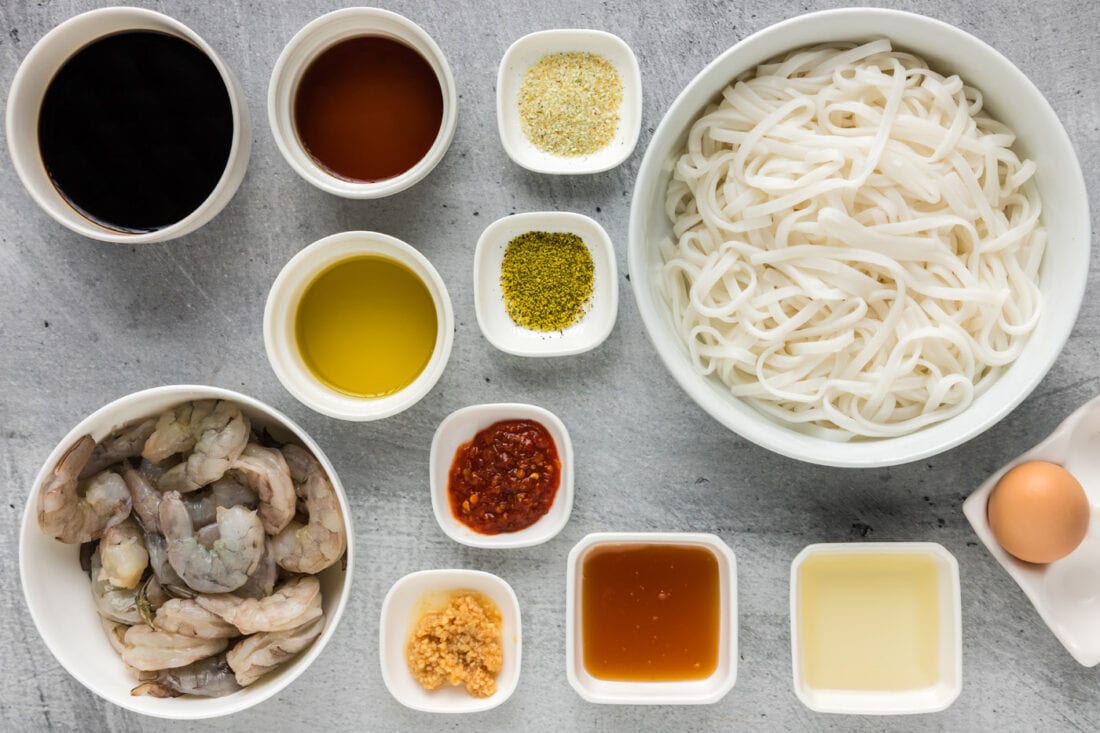
Ingredient Info and Substitution Suggestions
SHRIMP – Fresh or frozen shrimp will work, however, I wouldn’t suggest using precooked shrimp for this recipe. If you are using frozen shrimp, be sure to thaw them first and pat them dry before beginning.
NOODLES – Thin, flat rice noodles are the traditional noodles used for pad Thai.
SAUCE – We opted for a mixture of honey and rice vinegar in our homemade pad Thai sauce as tamarind paste can sometimes be difficult to find around us. However, if you can get your hands on some you can omit the vinegar and honey and substitute with tamarind paste. Start at 2 Tablespoons, taste, and adjust as needed. Keep the honey on hand in case you want to sweeten it up a bit.
How to Make Shrimp Pad Thai
These step by step photos and instructions are here to help you visualize how to make this recipe. You can Jump to Recipe to get the printable version of this recipe, complete with measurements and instructions at the bottom.
- Prepare the sauce mixture by whisking all sauce ingredients in a bowl. Set aside.
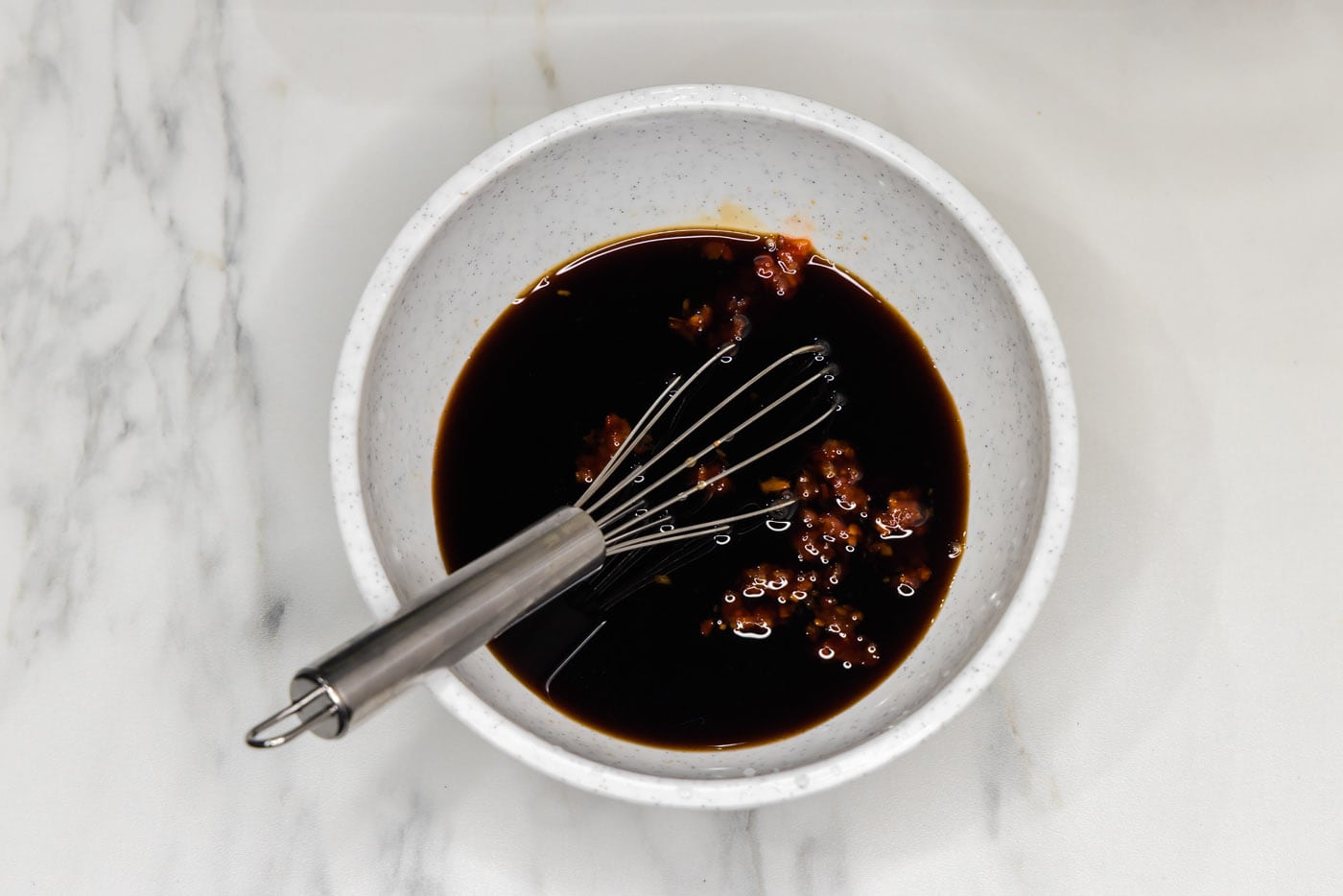
- Heat olive oil in a skillet over medium-high heat until shimmering. Add minced garlic and shrimp. Sprinkle garlic salt and lemon pepper over the shrimp. Cook for 2-3 minutes per side, until shrimp changes color. Move shrimp to one side of the pan.

- Crack egg into the skillet and use rubber spatula to scramble. Stir shrimp and egg together.
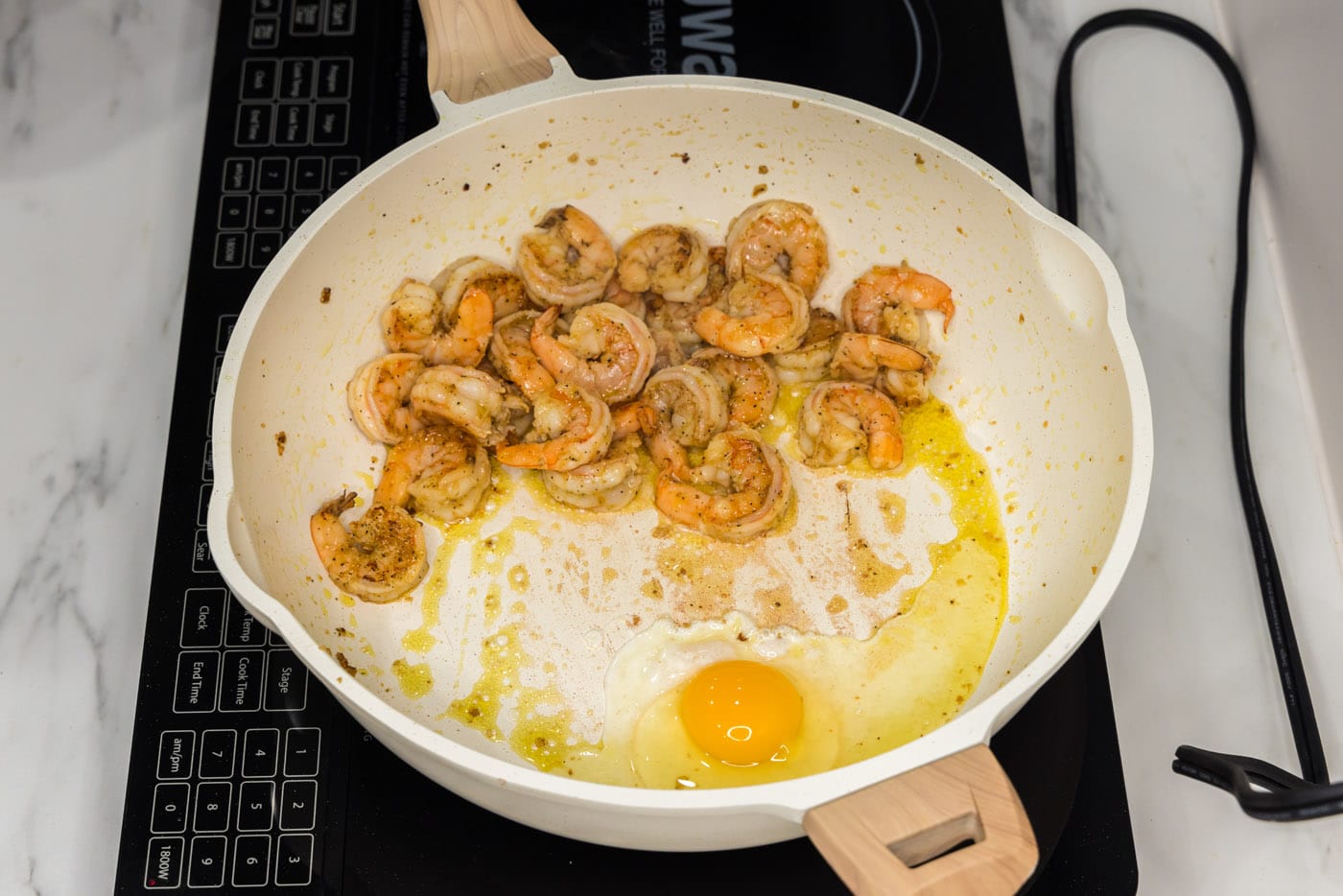
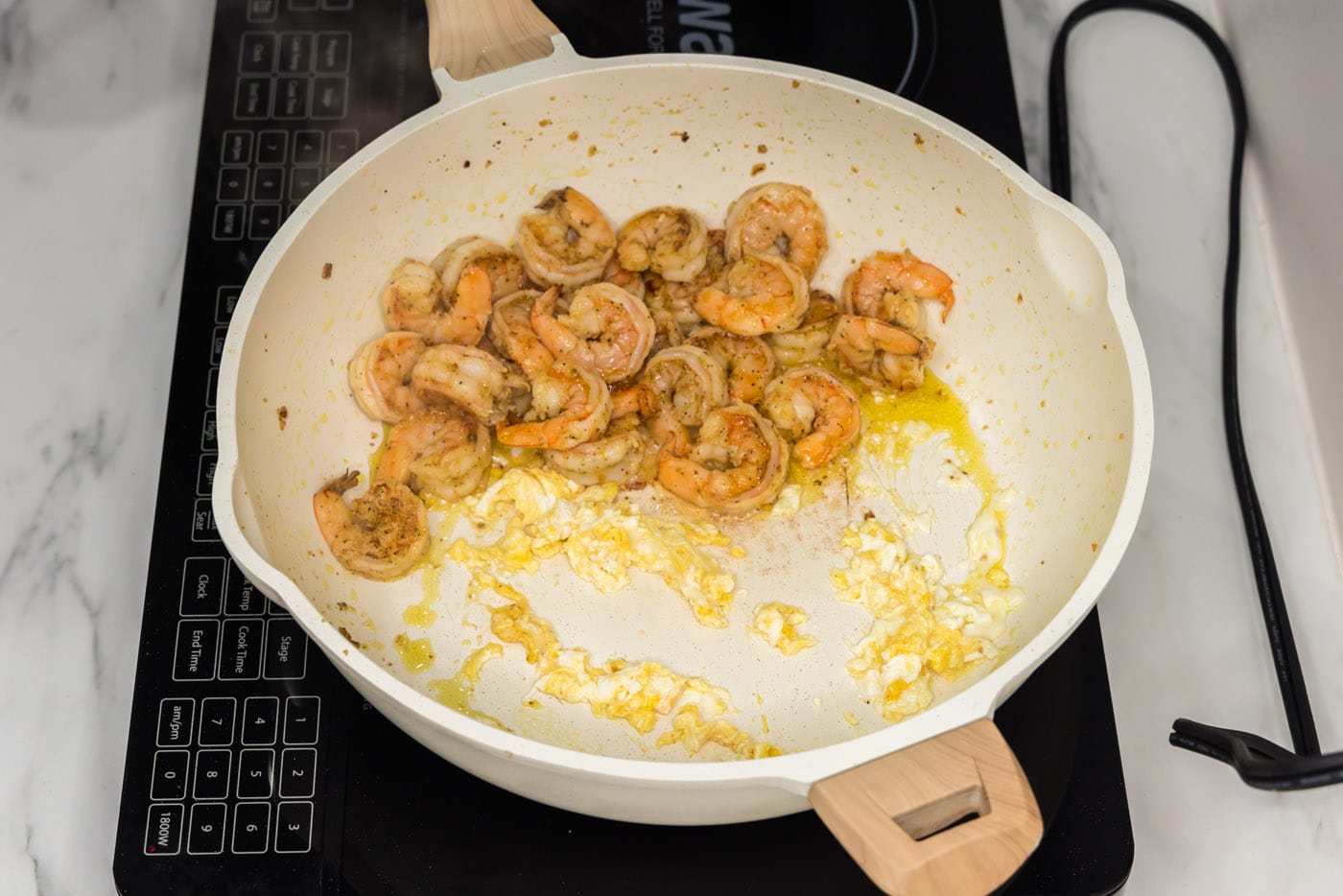
- Add cooked noodles to the skillet and toss to combine.
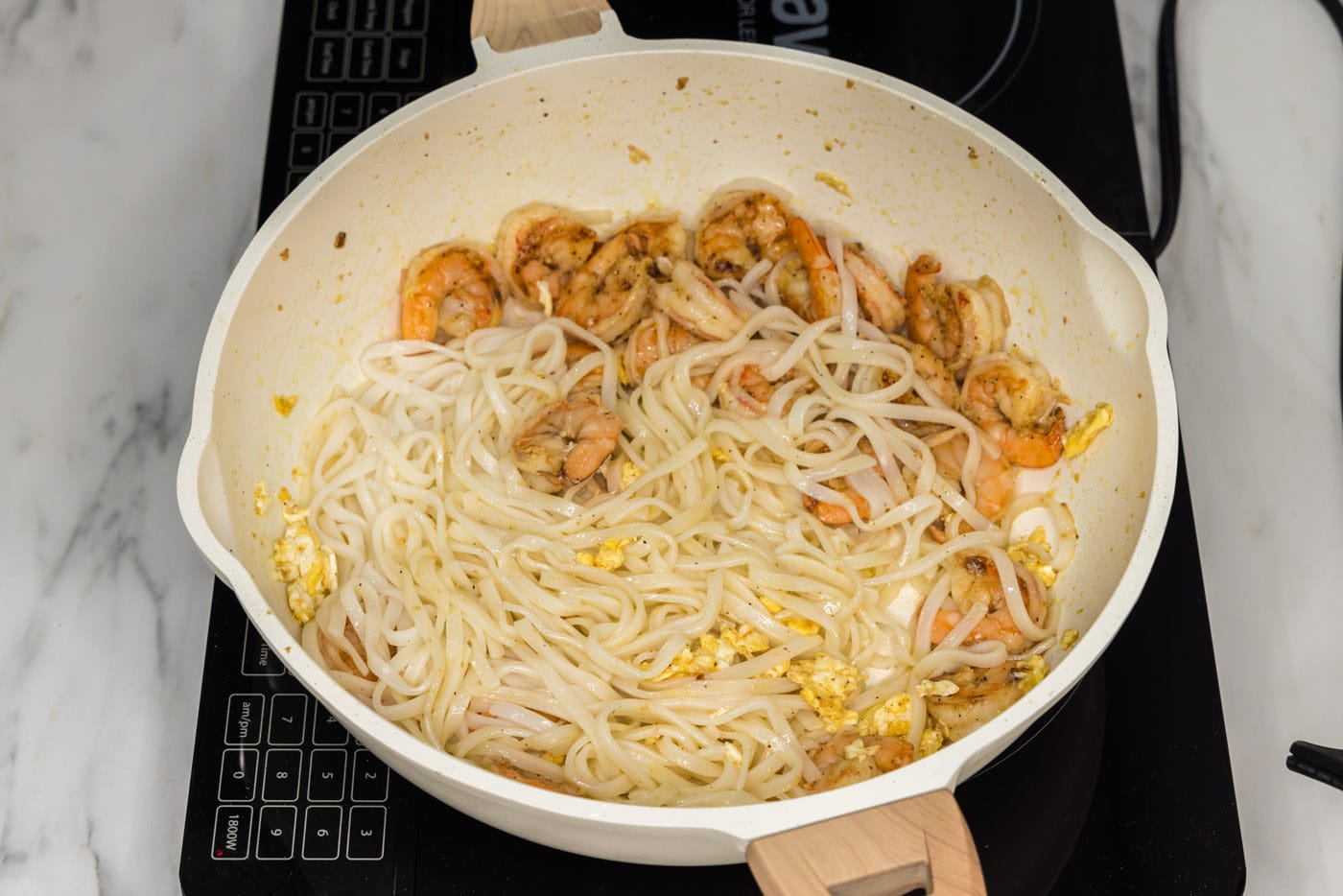
- Pour sauce into the skillet. Bring to a boil then turn heat down to low. Simmer for a few minutes or until heated through.
CHEF’S TIP – If you would like your sauce thicker, you can whisk together 2 teaspoons of cornstarch and a 1/4 cup of water and add it to the skillet. Simmer and stir until thickened.

Frequently Asked Questions & Expert Tips
Shrimp does not take long to cook, which also means it can easily be overcooked. The shrimp will curl and turn opaque with pink and orange hues when it is finished cooking. Overcooked shrimp are rubbery and tough in texture.
Shrimp pad Thai on its own would be considered mild, not spicy. The chili garlic sauce is really the only component that adds a dash of heat, but to some, it may not even be noticeable. The heat level is easily adjustable here. If you are a fan of spiciness I would recommend adding sliced red chili peppers to the dish.
Store leftovers in an air-tight container kept in the refrigerator for 2-3 days. Reheat in a skillet over medium-low heat until warmed through. Shrimp can easily overcook when reheating, so it may be best to reheat the rest of the dish and add the shrimp back in towards the end just to rewarm them.
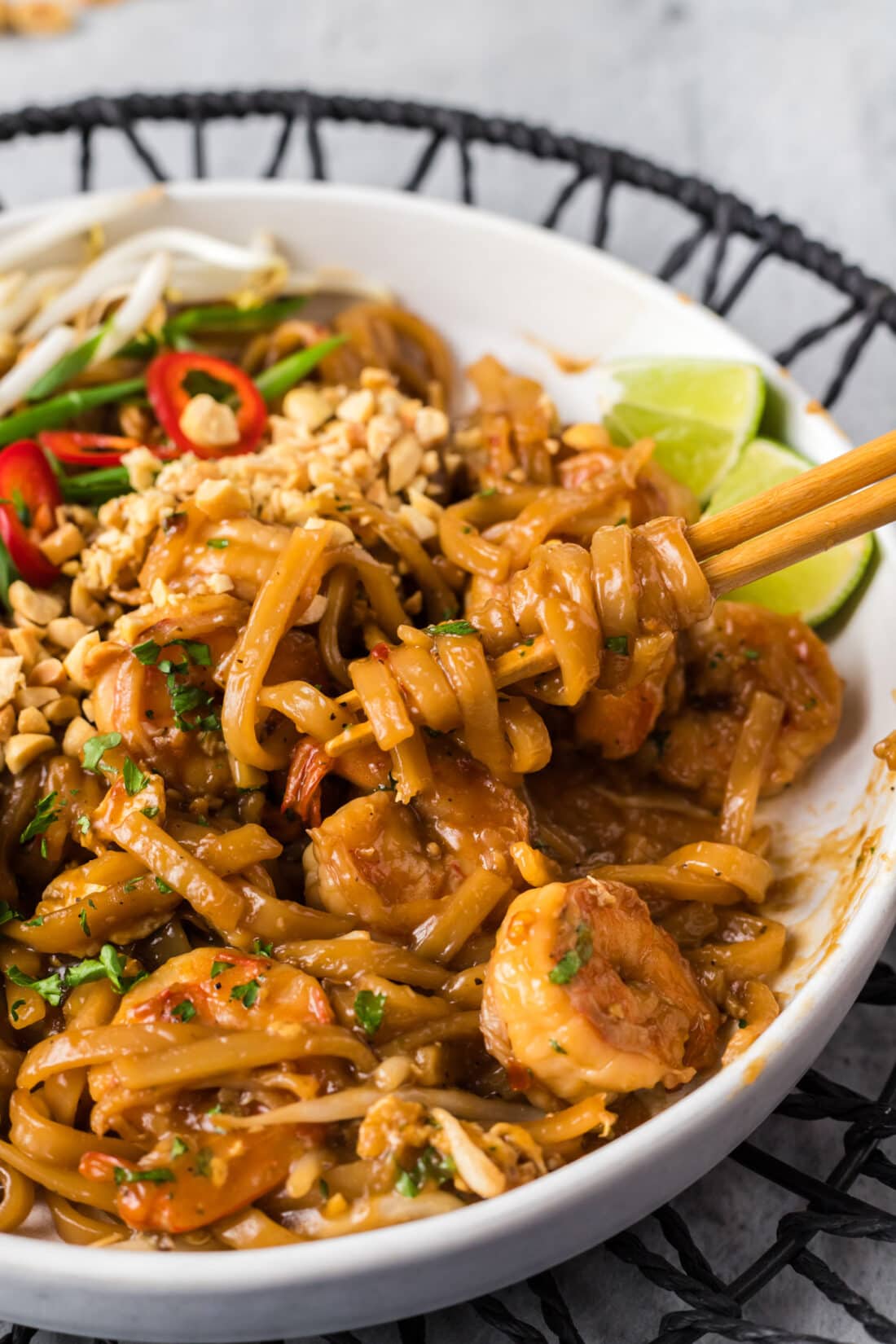
Serving Suggestions
Optionally garnish your shrimp pad Thai with chopped peanuts, bean sprouts, sliced red chili peppers, or thinly sliced green onions along with a wedge of lime.
More Related Recipes
I love to bake and cook and share my kitchen experience with all of you! Remembering to come back each day can be tough, that’s why I offer a convenient newsletter every time a new recipe posts. Simply subscribe and start receiving your free daily recipes!

Shrimp Pad Thai
IMPORTANT – There are often Frequently Asked Questions within the blog post that you may find helpful. Simply scroll back up to read them!
Print It Rate ItIngredients
Sauce
- ½ cup low sodium soy sauce
- ¼ cup fish sauce
- 3 Tablespoons honey
- 3 Tablespoons rice vinegar
- 1 Tablespoon Asian chili garlic sauce
Entree
- 2 Tablespoons olive oil
- 1 Tablespoon minced garlic
- 1 pound raw large shrimp peeled and deveined
- 1 teaspoon garlic salt
- 1 teaspoon lemon pepper
- 1 large egg
- 4 ounces pad Thai rice noodles cooked per package instructions
Things You’ll Need
Before You Begin
- Fresh or frozen shrimp will work, however, I wouldn’t suggest using precooked shrimp for this recipe. If you are using frozen shrimp, be sure to thaw them first and pat them dry before beginning.
- Shrimp does not take long to cook, which also means it can easily be overcooked. The shrimp will curl and turn opaque with pink and orange hues when it is finished cooking. Overcooked shrimp are rubbery and tough in texture.
- Optionally garnish your shrimp pad Thai with chopped peanuts, bean sprouts, sliced red chili peppers, or thinly sliced green onions along with a wedge of lime.
Instructions
- Prepare the sauce mixture by whisking all sauce ingredients in a bowl. Set aside
- Heat olive oil in skillet over medium-high heat until shimmering. Add minced garlic and shrimp. Sprinkle garlic salt and lemon pepper over the shrimp. Cook for 2-3 minutes per side, until shrimp changes color. Move shrimp to one side of the pan.
- Crack egg into the skillet and use rubber spatula to scramble the egg. Stir shrimp and egg together.
- Add cooked noodles to the skillet and toss to combine.
- Pour sauce into the skillet. Bring to a boil then turn heat down to low. Simmer for a few minutes or until heated through.
- If you would like your sauce thicker, you can whisk together 2 teaspoons of cornstarch and a 1/4 cup of water and add it to the skillet. Simmer and stir until thickened.
Expert Tips & FAQs
- Store leftovers in an air-tight container kept in the refrigerator for 2-3 days. Reheat in a skillet over medium-low heat until warmed through. Shrimp can easily overcook when reheating, so it may be best to reheat the rest of the dish and add the shrimp back in towards the end just to rewarm them.
Nutrition
Chef Antoine Davis
Latest posts by Chef Antoine Davis (see all)
- Salmon Pasta - December 26, 2024
- Chicken Tinga - December 24, 2024
- Steamed Shrimp - December 17, 2024
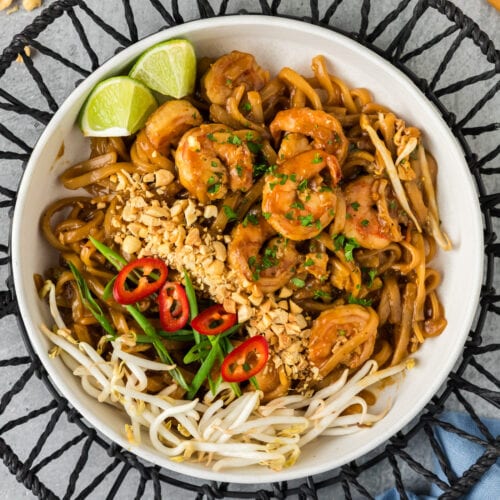


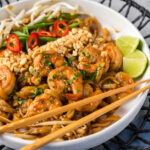
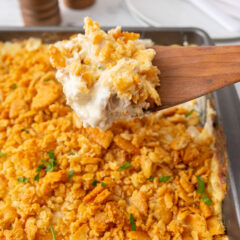
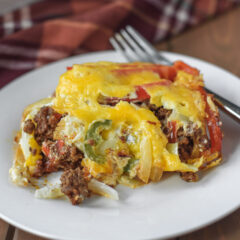
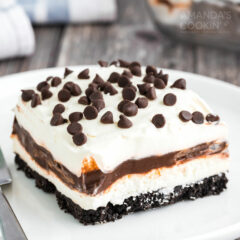






Leave a Reply